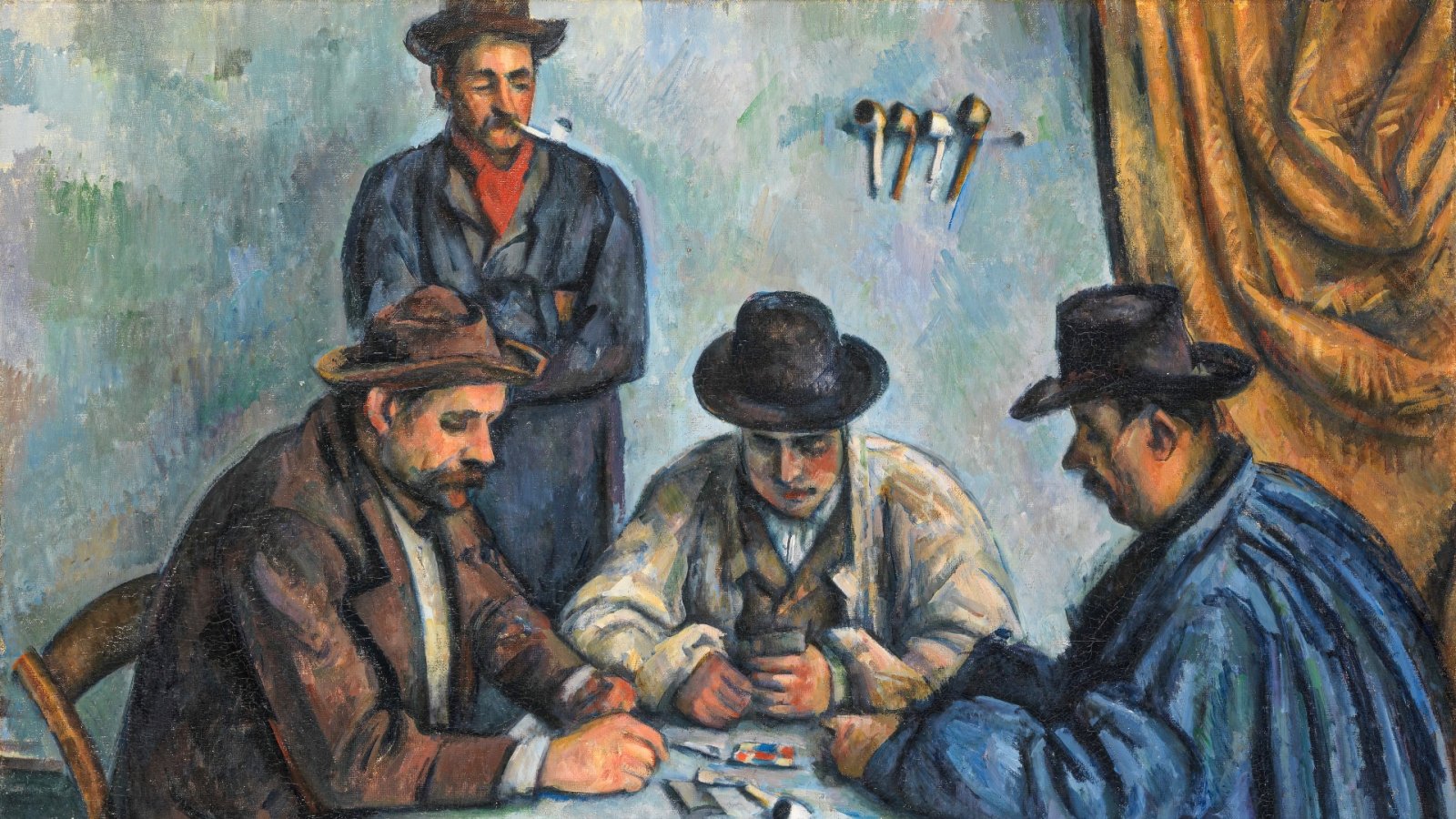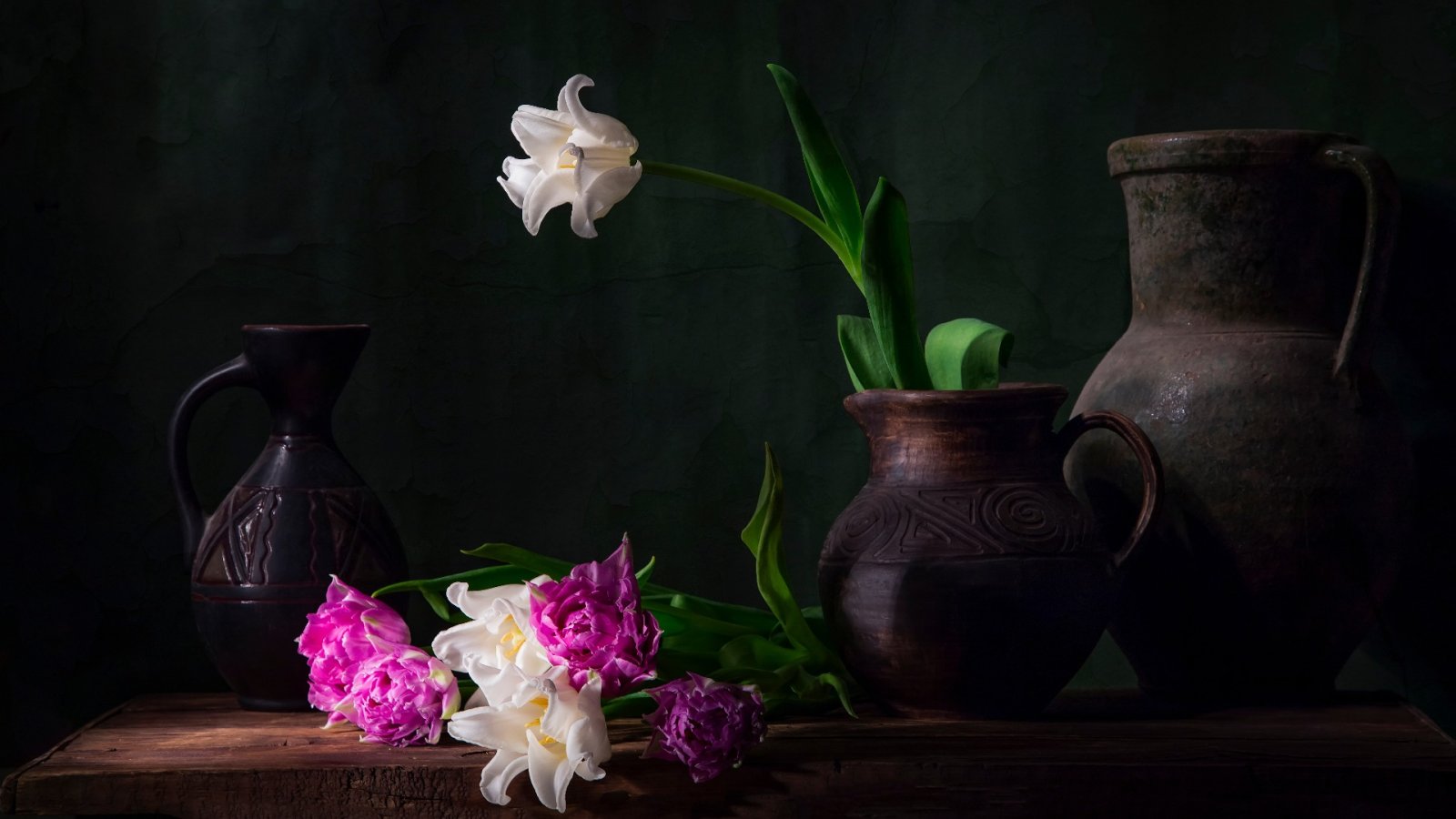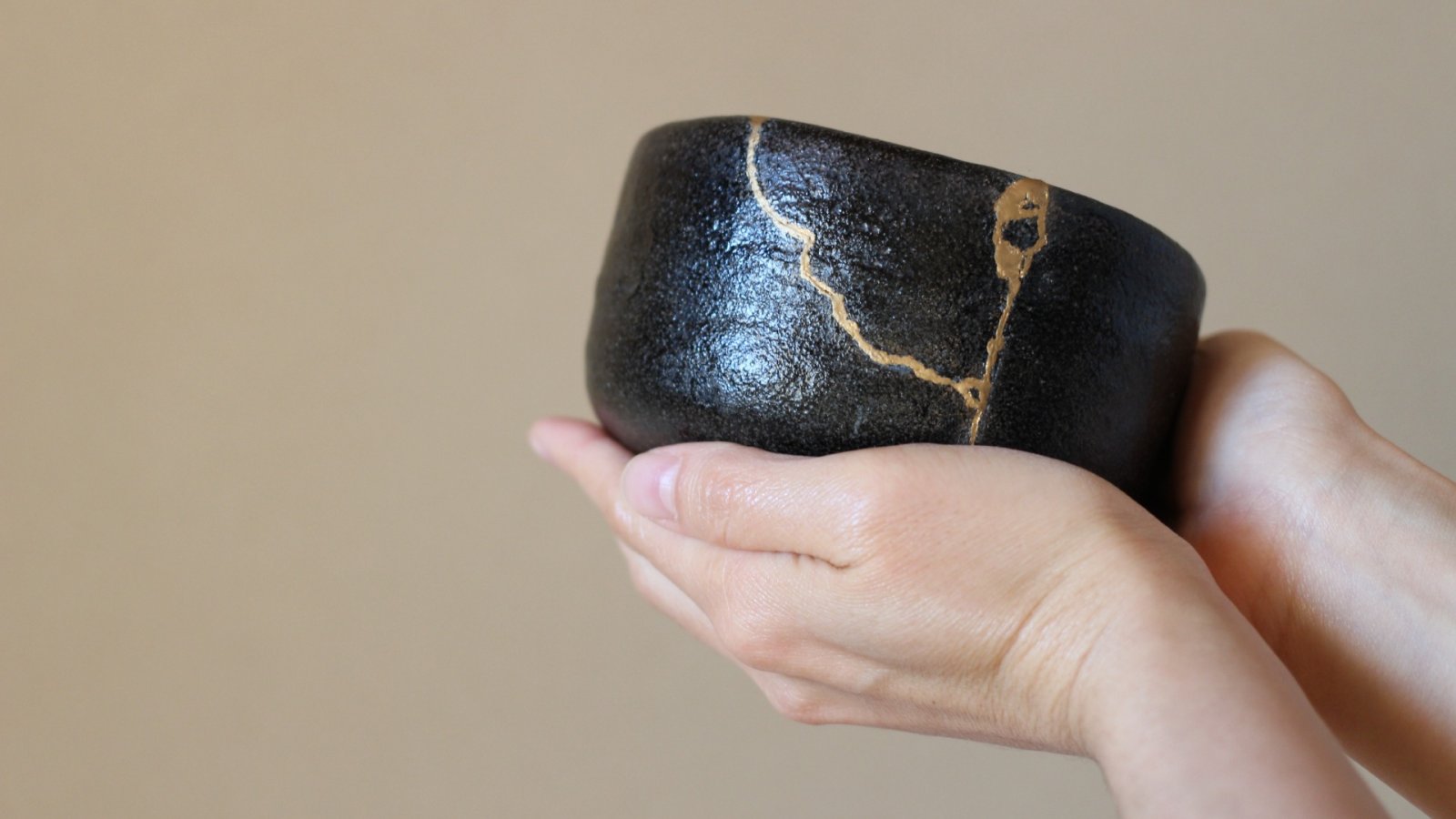Kintsugi (golden joinery) is a centuries-old Japanese art of repairing broken pottery. The method involves meticulously piecing together shards of broken ceramics and filling the gaps between them with a lacquer that has been dusted or mixed with powdered gold, silver, or platinum.
Rather than disguising breakage, kintsugi treats cracks and seams as part of an object's history and unique story. The powdered metal added to the lacquer creates dazzling gold veins accentuating where the pottery was broken. This novel approach finds beauty in imperfection by highlighting repairs rather than hiding them. Experts believe the art of kintsugi may have originated in the late 15th century when the Japanese Shogun Ashikaga Yoshimasa sent a damaged Chinese tea bowl back to China for repair. However, it was returned with ugly metal staples mending the cracks. This may have inspired Japanese craftsmen to develop a more aesthetically pleasing restoration technique using gold-flecked lacquer.
Rather than masking flaws, kintsugi embraces them as part of an object's narrative and patina of age. It is a poetic Japanese philosophy that sees beauty emerge from breaking and coming back together again.
The Japanese art of precious metal-infused lacquer repair became closely associated with ceramic vessels used in the tea ceremony (chanoyu). This ritualistic preparation and sharing of matcha tea embodies the wabi-sabi aesthetic of finding beauty in natural imperfections.
As a philosophy, Kintsugi reflects this appreciation of the flawed or asymmetrical found in traditional Japanese arts. By accentuating cracks and seams with powdered gold, silver or platinum, it treats breakage not as something to disguise but as an event in an object's narrative life. This normalizes wear and damage from use over time. This relates to the Japanese view of valuing marks of wear that come from an object being handled and enjoyed. It provides rationale for keeping something even after damage, highlighting repairs simply as part of its evolving patina rather than cause for replacement.
Kintsugi also connects to the Zen concept of "no mind" (mushin), which encompasses non-attachment to material possessions as well as acceptance of change and impermanence as natural parts of human experience. Just as the cup remains whole even when broken, Kintsugi sees beauty emerging from disruption and the journey of restoration. It finds poetry in breakdowns and reformations as inevitable facets of everyday life.
In the Kintsugi process, fragmented items are pieced back together and outfitted with a special lacquer. But unlike common glues or fillers meant to disguise repairs, urushi lacquer is mixed with powdered metals like gold, silver, or platinum. This imbues the lacquer used to mend cracks with a shimmering ethereal quality once dried. Rather than seeking invisible fixes, Kintsugi artisans instead opt to highlight repairs by filling seams with metallic lacquer which obviously stands out in contrast to the original pottery color. Kintsugi elevates repairs to deliberate design features rather than flaws through this accentuated rejoining technique.
Referred to also as kintsukuroi meaning "golden repair", the resplendent process results in restorations so prominent they could be considered tributes celebrating an item's story and continued use—elevating wear from the passage of time into art. In Kintsugi, visible mending becomes a means of both preserving history and cultivating new beauty from breakage.
Like the meditative wabi-cha tea ceremony, developed in opposition to existing Chinese aesthetics, broken ceramics were traditionally mended with unsightly metal staples.
According to Japanese historical accounts, this was what displeased Ashikaga Yoshimasa, the 8th Ashikaga shogun, when a favorite tea bowl was sent to China for repairs circa 1480. Upon its return fused with staples, he demanded an alternative Japanese approach. This is said to have given rise to the development of kintsugi.
Kintsugi masters utilized the sap of the urushi tree, which has a long history of lacquer use in Japan dating back to 2400 BC. Known as urushi sap, it is harvested from the related species Toxicodendron vernicifluum, or lacquer tree. Like its relatives poison ivy and poison sumac, urushi sap contains high concentrations of toxic urushiol. Those working with the medium gradually build immunity, though most craftspeople carefully don protective gloves and masks for safety while harnessing urushi's unique adhesive properties. By infusing powdered precious metals into layers of urushi lacquer and filling fractures, kintsugi was born as a distinctly Japanese artistic philosophy elevating natural damage into refined beauty.






